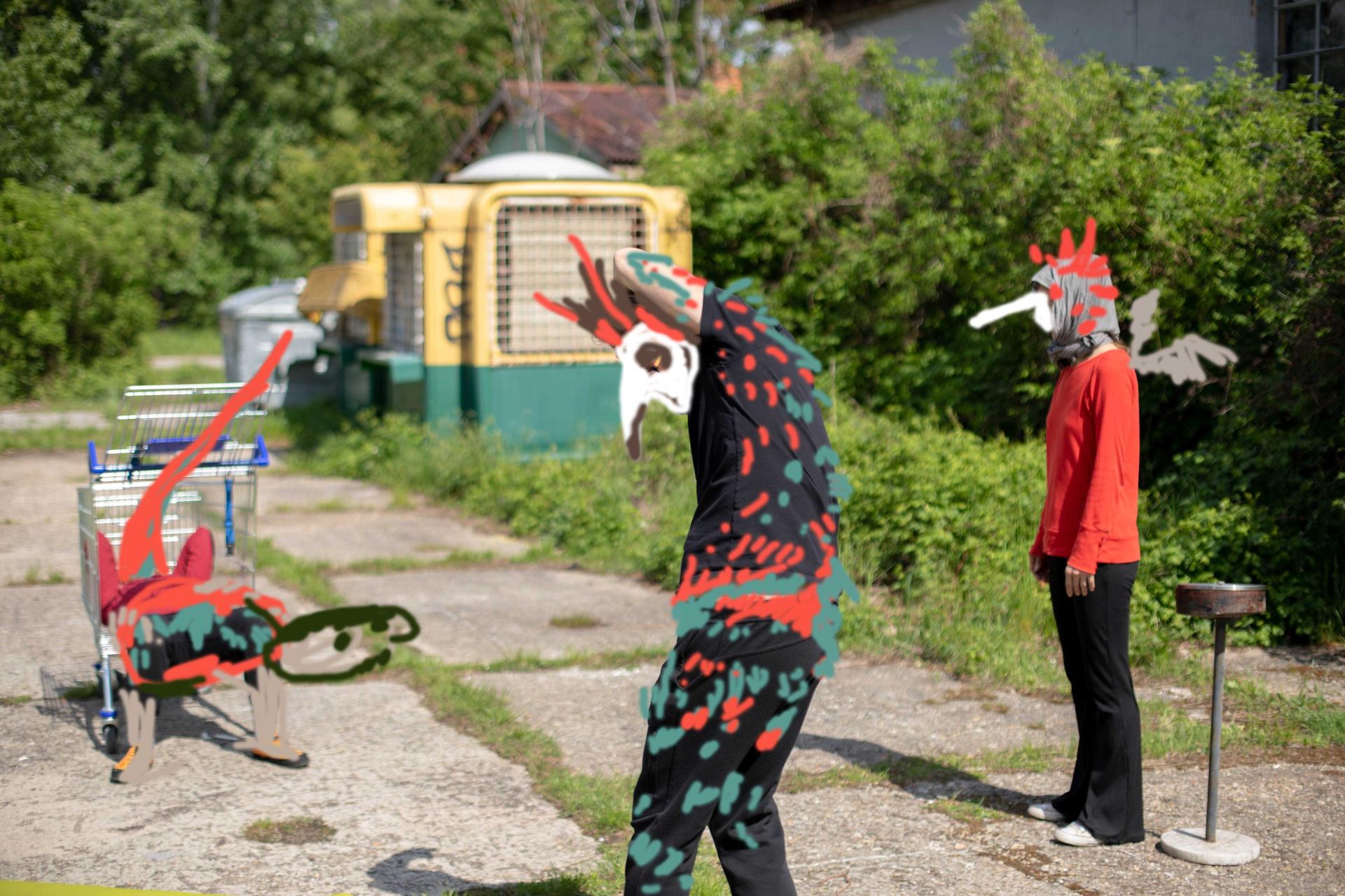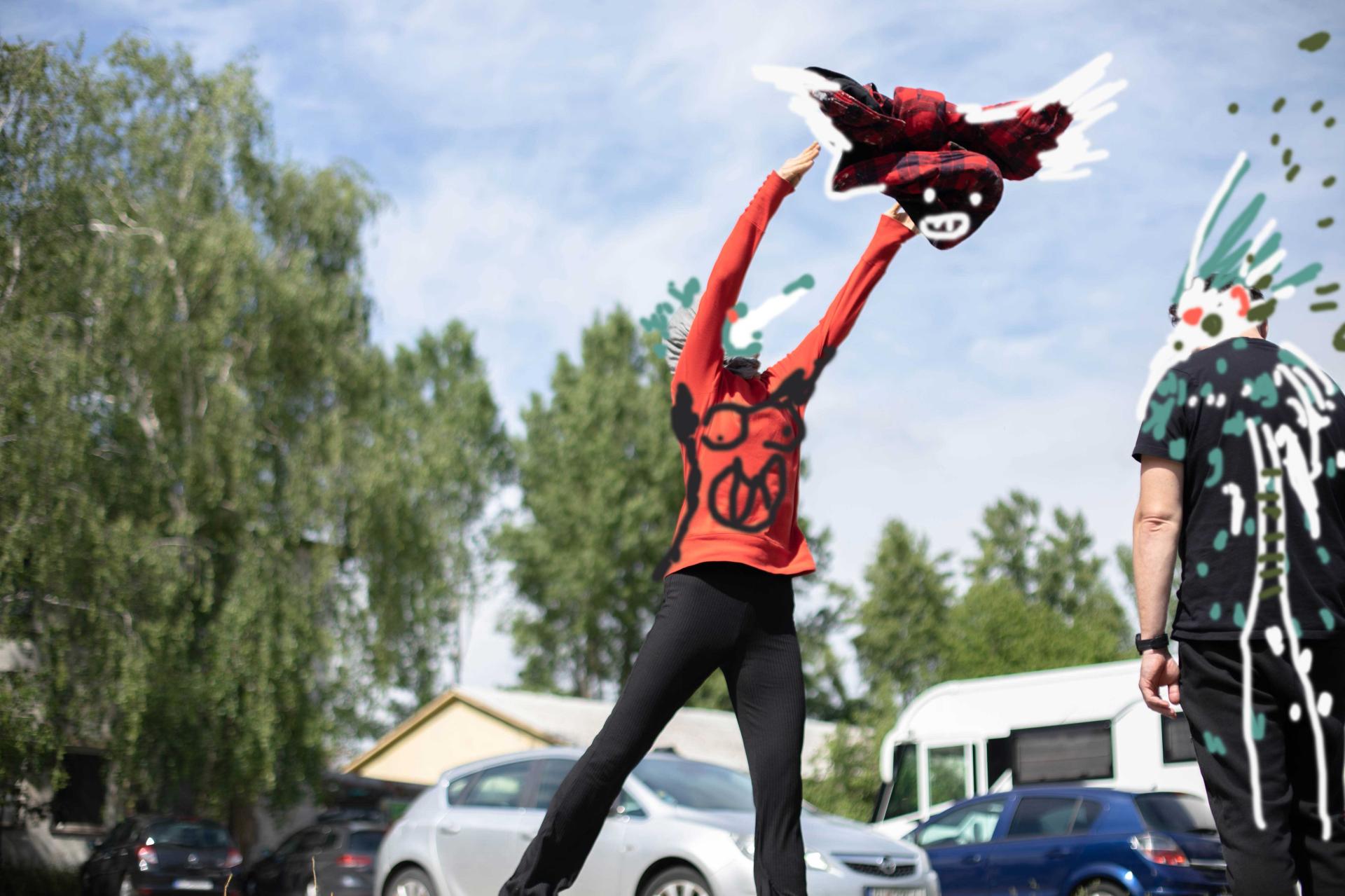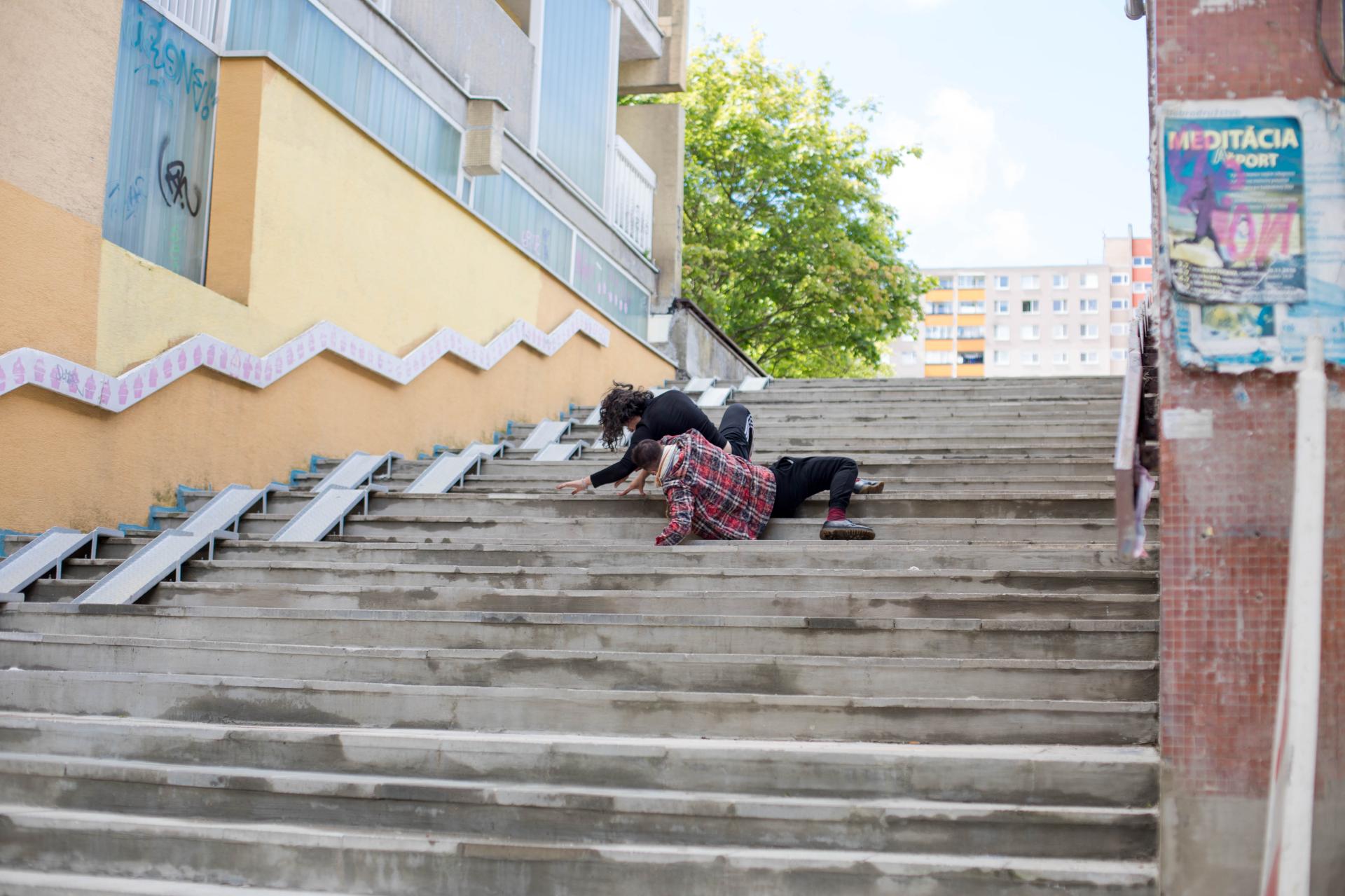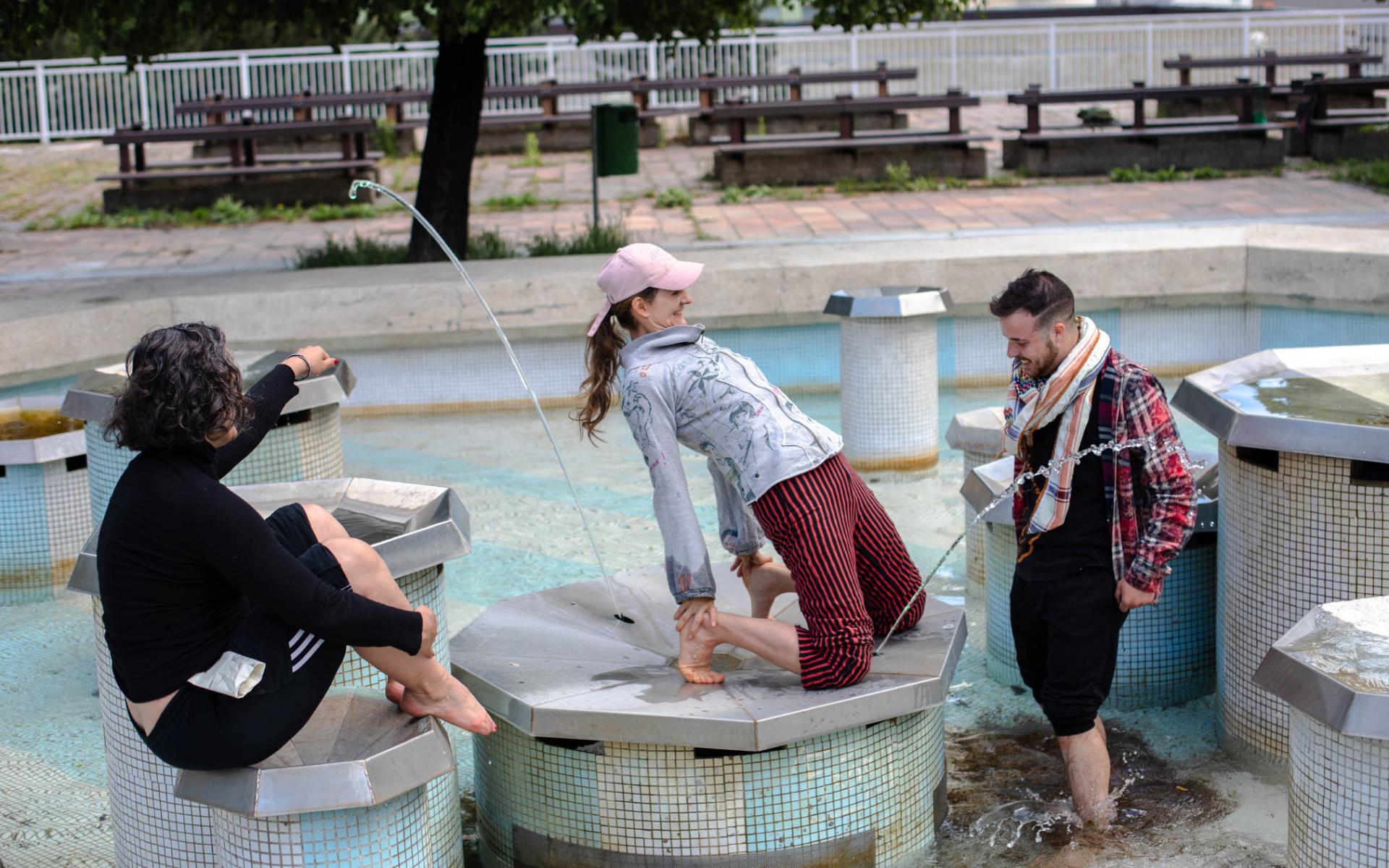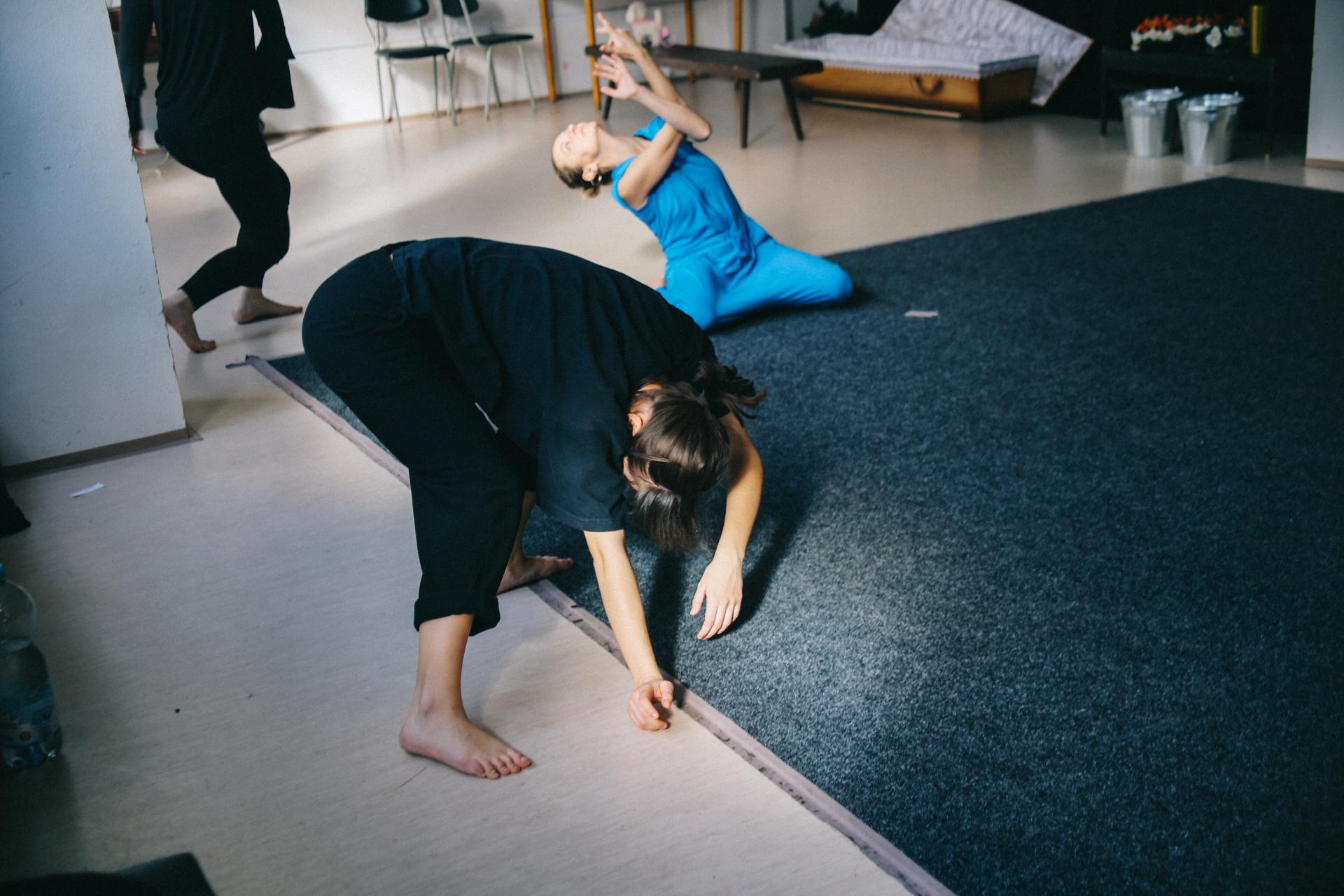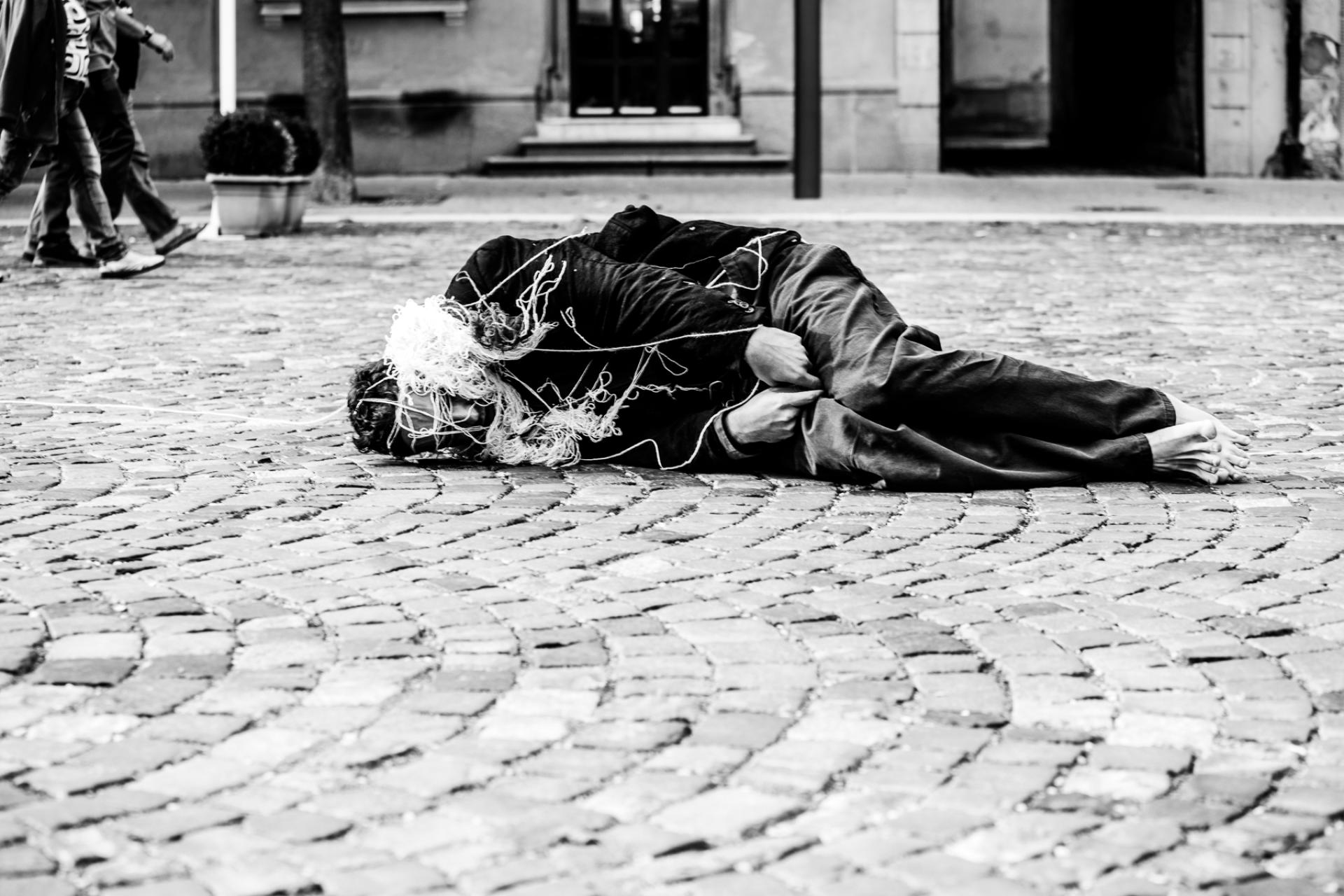Human Layers
Basic information
Project Title
Full project title
Category
Project Description
The project is focused on psychosomatic spatial research, which is disseminated by performative courses to the public. A series of workshops are based on the perceptual exploration of spatial qualities, where we use performance as a tool for design thinking and empathizing with space. The intention is to bring a performative approach closer to the society to initial social transformation with regard to care and a greater emphasis on the people who use it.
Project Region
EU Programme or fund
Description of the project
Summary
The project aim of this practical research is to expand the implementation and education in the field of design with regard to emotion, empathy, and creativity. Strictly speaking, this project does not focus on clarifying the outcome of design as an object outside of me, but rather on the quality of the inner experience. It responds to the increasing need for more socially and environmentally sustainable ways to think about city-making based on care in interactions of materials and flows, human and non-human bodies.
The basic methodology is focused on psychosomatic spatial research, which is disseminated by performative courses to the public and professionals from architecture, urban planning, and visual arts. A series of workshops are based on the perceptual exploration of spatial qualities, where we use performance as a tool for design thinking and empathizing with space. The intention is to bring actional approaches closer to the widest possible range of people and to start considering the place with regard to care and a greater emphasis on the people who use it. This activity aims to create a Social Plastique as conceived by Beuys, i.e., the initiation of social transformation.
At the moment the project is still ongoing due to the time required for implementation both in the educational process and in practice. In the meantime, the courses are online due to pandemic measures. However, a two-day workshop has been held, the outputs of which will be incorporated into a forthcoming proposal for the revitalization of a residential area in Bratislava, Slovakia. A plan of further activities for the general public as well as for architecture and art students is also already in place.
Key objectives for sustainability
The intention of the project is to change the approach to urban space by increasing empathy and sensitivity. The workshop program was designed with various exercises focused on holistic work with the mind and body. The goal was to activate the psycho sensory approach to space, to deepen perception. If we understand architecture as a physical manifestation of social relationships, then a change in the perception of the individual leads to a deeper social transformation.
Contemporary cities face challenges as a result of material and financial flows and consumption globally. The flows of people generate new modes of the neighborhood and political commitments that demand care, empathy, and awareness of the other. Experiments mobilizing choreographic thinking within the spatial design are offering new ways to understand these inequalities, and our aim is to showcase and refine these as a new field of practice able to respond to the challenges.
This conceptual intention considers the haptic and kinesthetic senses of the organs to be crucial for the development of a shared space. This creates skills that help shape social inclusion and spatial justice by building empathy. The aim is therefore to develop an experiential and creative set of shared skills that will integrate somatic intelligence into the building and urban planning and design processes; giving new tools to think and experience the city as a network of relationships.
Key objectives for aesthetics and quality
The project is based on interdisciplinarity, defined practice in the crossroad of disciplines adjoining the making of the city (architecture, town planning, landscape, urban design, urban scenography), and of performative art (mediums of performing arts and contextual arts). A resolutely transversal practice, at the crossroads of all practices that touch on the creation and more specifically the transformation of the world in which we live.
We should understand that performance is not completed and is not going to be completed since it is always re-shaping itself. Performance, with its interdisciplinary characteristics, defines itself, as described by Barbara Kirshenblatt-Gimblett, it is a post-discipline of inclusions. The field of performance includes a wide range of cultural practices and critical discussions to understand the specific role it plays in culture. However, I imagine that one of the main contributions of the performance to the architectural discourse may be related to the idea of a change in the perception of the space to the holistic, for which we will use the psychosomatic experience.
By focusing on the use of performance art within architectural practice, naturally incorporates artistic and aesthetics aspects. The desired outcome is to use artistic activities to initiate a change in working with a shared space. Each workshop is designed to use the learned skills in the performative event as a psycho-semantic spatial exploration of the public space.
Key objectives for inclusion
The project is focused to disseminate a performative approach to changing the way of spatial approach. For this reason, the project works with different social groups, mainly local communities, as well as with the public and professionals from praxis.
It is necessary to see architecture and the space it represents as a living relationship structure. This effort is based on a struggle to understand the complicacies and complexities of nowadays world. In times of environmental jeopardy, we are forced to redefine our position in the world and search for possible solutions to survival. This can be realized by reconfiguring the existing spatial perception associated with an architectural practice. To create transdisciplinary alliances in spatial empathy between urban planning and somatic movement practice. Exploring the possibilities of embodying mental images and training of perception to build a stronger sense of belonging and attention for the built environment, its social, ecological, and material networks.
Results in relation to category
The project is a long-term process for the reason of striving for social transformation in the long term. Currently, training in the form of online performance classes is underway. One performative workshop has been held so far, the outputs of which will subsequently be incorporated into architectural practice.
Until now research in the field of architecture has been empirically focused particularly on objects as a resulting of the design approach. Without experiencing the feelings, we do not have a theoretical overview of space formation ways and possibilities. Many architectural aspects are empirically unexplored, in particular with the roles of feeling, emotion, and creativity in the embodied experience of designing. The focus on the imaginative experience of creativity, which leads to ideas, rather than to the outcomes of creativity, is also missing.
This means that the aim of this practical research is to expand the implementation and education in the field of design with regard to emotion, empathy and creativity. Strictly speaking, this project does not focus on clarifying the outcome of design as an object outside of me, but rather on the quality of the inner experience.
How Citizens benefit
Focusing on space as a generator of emotional and visceral states, the project promotes the transformation of subjectivity towards an internalized change, towards new horizons of a shared global sphere. Performing, conducting courses, and organizing training sessions in psychosomatic exercises activates deeper layers of perception, empathy and cultivates understanding in a specific context. It will be an important tool for institutions to start a mutual dialogue not only with visitors but also with planetary alliances.
The aforementioned problems as well as the strong politicum with the demands of the decolonization of society bring with them the need for a rethinking of the strategies inscribed deeply in the construction of society. It is evident from recent developments that by validating current issues and controversies through the choreographic moment, we are constantly renewing our knowledge and understanding of space. Space, as a living relational structure, is not an immutable construct, but as a dynamic system. The subject of constant change and updating.
The project is still in the process. It is run as online performative training and in the form of workshops. The results so far have been incorporated, for example, in the research of the Jurigovo square site in Bratislava or Kbely - locality U rumpálu and surroundings in Prague. The publication of the Manual of Psychosomatic Spatial Research is planned for next year. It is also planned to organize workshops for architecture students at Die Angenwandte in Vienna and from The Academy of Arts, Architecture & Design in Prague.
Innovative character
By its very nature, the project also aims to engage local communities who are confronted with different approaches to shared space through performance. The realized performances have taken place in public space thus coming into direct contact with citizens confronted with a different approach.
Until now research in the field of architecture has been empirically focused particularly on objects as a resulting of the design approach. Without experiencing the feelings, we do not have a theoretical overview of space formation ways and possibilities. Many architectural aspects are empirically unexplored, in particular with the roles of feeling, emotion, and creativity in the embodied experience of designing. The focus on the imaginative experience of creativity, which leads to ideas, rather than to the outcomes of creativity, is also missing.

